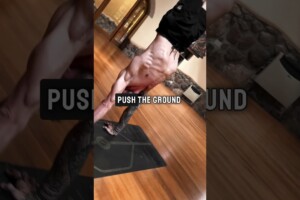
If you want to enhance your practice of yoga, then you should learn the proper breathing techniques. These techniques help you to breathe more deeply and to improve your body’s ability to move more smoothly. They also improve your overall health and reduce stress.
Ujjayi
Ujjayi breathing techniques in yoga help the body and mind relax and calm. It’s important to take time to practice ujjayi so that it becomes natural. If you’re a beginner, you can do this while you’re practicing a simpler asana. Once you’re familiar with it, you can do it while you’re completing more difficult asanas.
Ujjayi breathing is a form of pranayama. Pranayama helps the body’s nervous system, heart, and lungs function more effectively. In addition, it also helps the body generate internal body heat.
Ujjayi is a type of pranayama that can be done while you’re in class or even off the mat. The best way to learn this type of breathing technique is through an experienced yoga teacher. You can then practice it on your own.
Sheetali
Sheetali breathing techniques are used to cool the body. This technique also calms the mind and reduces stress. It is an effective tool for cooling down when the weather is hot.
Sheetali is also helpful for reducing symptoms of a fever. Similarly, it can be used to cool down a person who has a headache or sore throat.
It is not recommended for people who have respiratory issues, such as a cough. Likewise, it should not be done during cold weather. People with a history of cardiac disease or ophthalmologic complications should avoid it.
When practicing sheetali pranayama, you should have an erect spine and sit upright. Avoid drinking a lot of water before starting. Once you have a comfortable position, start your practice by exhaling through the nose and inhaling through the mouth. You should hold your breath for three to five minutes. After that, slowly stand up.
Surya Bhedna
Surya Bhedna breathing techniques in yoga are used to activate the pranic energy channels. It involves a limited pattern of inhaling and exhaling through your right nostril. This method of breathing can be done any time during the day.
Aside from warming the body, Surya Bhedna is also effective in relieving anxiety and depression. However, it should be avoided if you have heart or blood pressure problems. You should also consult your doctor before starting the practice.
The technique of Surya Bhedna should be practised slowly. In order to do this, you should be in a seated position. During the practice, your throat should be straight, your eyes closed, and your fingers should be crossed.
Your right hand should be placed on your eyebrow. Using your middle finger, close your left nostril. For the rest of the breath, you should breathe through your right nostril.
Kapalabhati
Kapalbhati is a type of yoga breathing technique. It is usually done as part of a breath retention exercise. The exercise helps to clean the nasal passageways and sinuses, as well as strengthening the core.
The practice of Kapalbhati has been used since ages to keep people healthy. It strengthens the body, relieves stress, improves digestion, and increases oxygen flow to the brain.
Although it is considered a cure for many ailments, Kapalbhati is not a substitute for professional medical advice. Do not perform this breathing exercise if you have high blood pressure, are pregnant, or suffer from heart disease.
In addition, do not perform Kapalbhati while you are menstruating. This is because it may cause you to vomit.
The exercise involves rapid inhalation and exhalation. When you begin, relax your body. Place your hands on your belly and your navel. You should feel your stomach muscles contracting. If you can’t, you can try using your shoulder or neck muscles.
Bhramari
Bhramari is a type of breathing technique that can be practiced by anyone. It helps people relax and lower their anxiety. This can be useful for people who are suffering from insomnia or depression.
Bhramari can also be used to promote a healthy lifestyle. It helps purge carbon dioxide from the body. Practicing this technique may help alleviate sinusitis, which can be caused by a cold. Also, the humming sound helps reduce buzzing in the ear.
Bhramari should be done in a well-ventilated room. If you are practicing this technique, make sure to avoid pressure in the chest.
Bhramari is usually done on an empty stomach. To do this, close your eyes and breathe out slowly. After the exhalation, create a humming sound that is medium or high in pitch. Humming helps cleanse the nasal cavity and prevents allergens from entering the lungs.
Did you miss our previous article…
https://quietmeditations.com/the-benefits-of-barre-poses/





